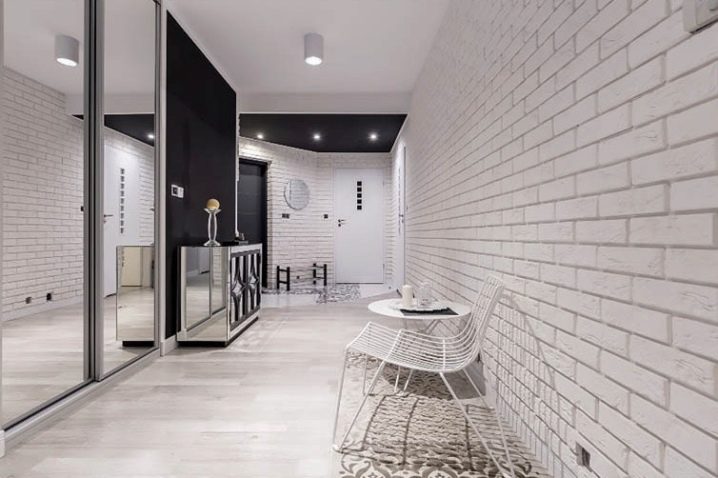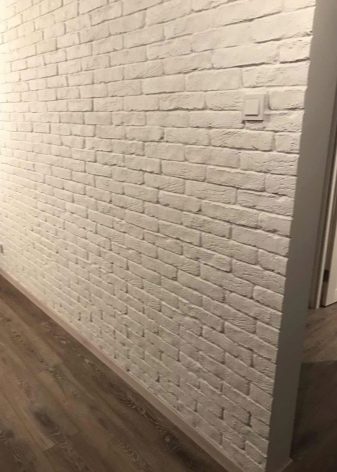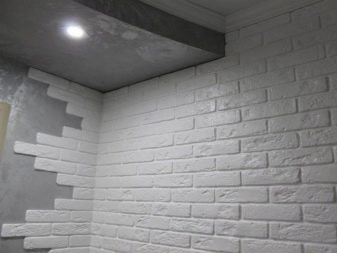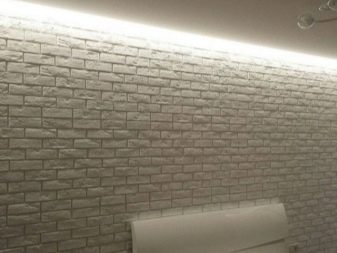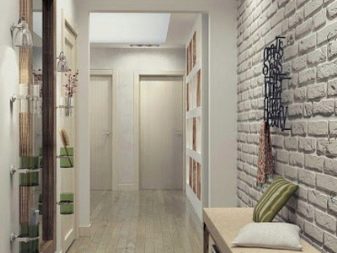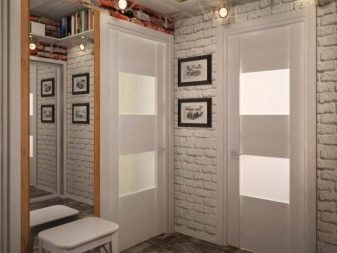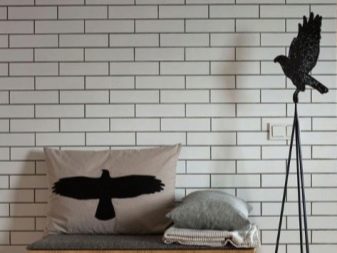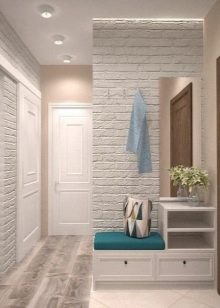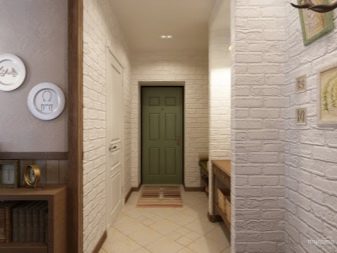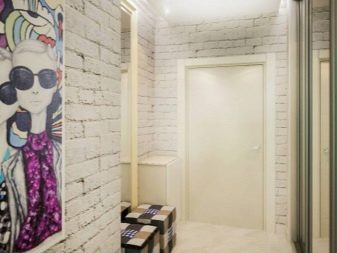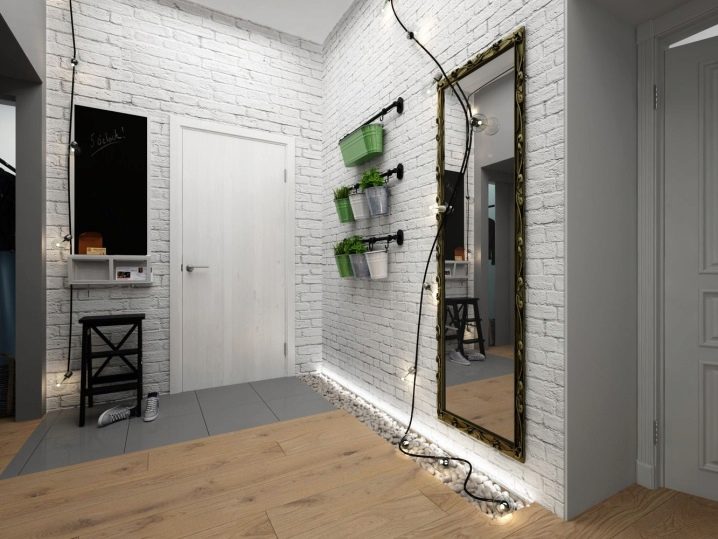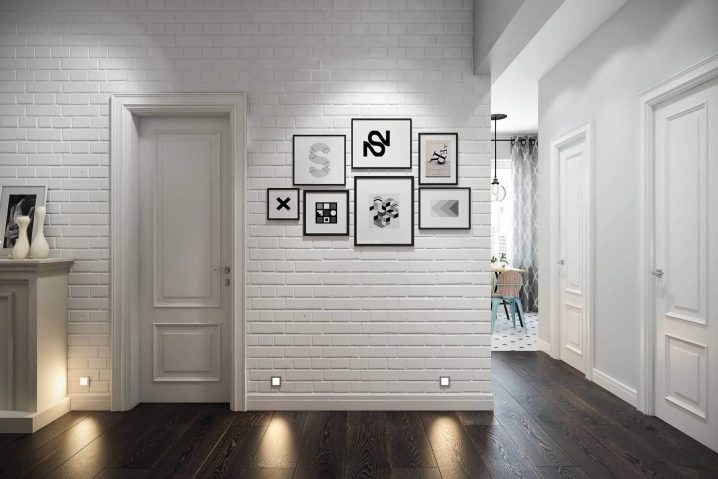White brick in the interior of the hallway
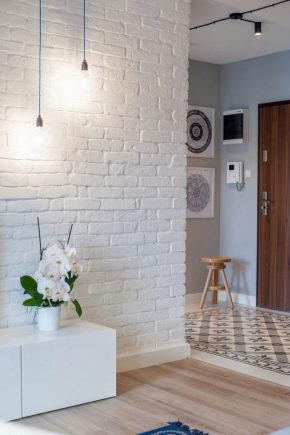
Decorative brick is one of the most popular finishing materials, which, in addition to finishing facades, is very often used for interior design. Hallway decoration with a white brick wall is not uncommon today. White color makes the room much lighter and gives it volume.
Advantages and disadvantages
The use of white brick in the hallway is an original and sophisticated design with a fashionable finishing material that has many advantages.
-
Such a coating will help hide all the flaws in the structures.
-
Possibility of fragmentary replacement. If one or more elements are violated, it is not necessary to disassemble and change the entire wall.
-
The lightness of the material does not require additional wall reinforcement.
-
Durability and resistance to various kinds of damage.
-
Increased noise and heat insulation.
-
Large assortment and wide price range. Allows you to choose the material to your taste and budget.
The only drawback of this material is the fragility of some species, which requires extreme caution when laying.
Finishing options
Decorating with decorative bricks in the interior can be done in different ways.
-
Silicate brick. Perfect for intricate interiors, attracting with a distinctive appearance. This material can also be used for facing fireplaces, arched openings and columns. To make the brick wall in the hallway look more attractive, it can be varnished.
- Decorative cement brick... This material is handcrafted and fragile. Embossed and rough brick coverings accentuate the design of the hallway.
- Plaster brick. It is actively in demand due to its appearance and many textures that resemble real brick. Decorating with decorative plaster bricks is considered the most inexpensive option. It is used for cladding certain areas or the entire wall, when zoning corners and doorways. The water-repellent varnish improves wear resistance by preventing deformation and deterioration.
- Clinker tiles. A popular analogue of decorative bricks. When cladding walls, clinker tiles create an imitation of brickwork. Clinker thickness from 7 to 18 mm allows you not to reduce the area of the hallway, especially this option is suitable for an apartment. White brick in the interior of the hallway allows you to clad not only load-bearing walls, but also to decorate partitions. Due to the density and strength, the performance properties of such a material are high.
The main thing is to leave seams larger than usual when laying such tiles for a natural effect.
-
Wall panels. This finish is made of dense plastic, has a pronounced texture and imitation of brickwork. The dimensions of one sheet are on average 0.5 m2, this allows you to perform cladding inside the hallway in the shortest possible time.
- White brick wallpaper. This is the simplest option that imitates masonry. Such a hallway design can be done independently, while it is not necessary to pre-align and clean the walls, since irregularities can play a positive role for the type of finish.
What style is it suitable for?
Decorative brick in the interior of the hallway is able to create a unique charm, special mood and cozy atmosphere. The variety of textures and types of such finishes can be used in various styles.
-
Loft... In this style, brick acts as the main element. The wall cladding is made of uniform and solid bricks with uneven edges.The white wall cladding, without any inclusions, goes well with the concrete ceiling and metal hangers.
- Ethnic style. The original interior of the hallway with imitation of white brick. The well-defined relief pattern can be combined with ceramic souvenirs or handicrafts on the shelves. And you can also complete fragments of historical artifacts or hieroglyphs.
- Scandinavian style. The walls will look great in this style, where the main focus is brickwork. It adds a touch of yesteryear to the interior.
Austerity can be diluted with a few paintings or a couple of vases, which will also create a homely and cozy atmosphere.
- Gothick style. This direction provides for a twilight atmosphere, plunging into the Middle Ages. To highlight this style, it is enough to use a combination of black and white bricks. Wooden beams on the ceiling and glossy furniture can complement the interior.
- Country... This style gives the interior a rustic feel. Here it is important to imitate the most natural brickwork with smeared clay and seams of various thicknesses.
- High tech. Here, the use of white brickwork is an integral part. The wall should look neat and natural. To play with contrasts, you can use a combination of white and black bricks.
Useful Tips
The correct use of white brick allows you to create an original and sophisticated interior in the hallway. A few tips for those looking to make their home look attractive right from the start.
-
Regardless of the style chosen, the hallway should harmonize with the interior of the whole house or apartment.
- The decorative area will look more attractive if it is covered with a colorless varnish. Covering with matt varnishes prevents the wall from appearing "wet".
- Fragmentary masonry able to protect the most vulnerable areas in the corridor.
- An entrance hall decorated with bricks should be well lit... This will help to visually enlarge the space.
- White brick with a glossy surface gives a more noticeable effect, refreshes and makes the space lighter.
-
White emphasizes individuality of design, making it exclusive.
Beautiful examples in the interior of the corridor
Using white brick in the hallway, you can easily create a beautiful and stylish design using several design techniques.
-
White brick can be used to decorate a separate wall with a mirror. It also looks good as an independent fragment of the entire room.
- You can lay out only one wall with bricks, and paste over the rest with wallpaper, or paint it with paint.
- This type of cladding can accentuate certain areas. This can be an arch, a doorway, or a niche for a mirror.
- Modern designers often imitate destroyed surfaces on the walls. That is, the walls are not completely revetted, but only below, changing the height of the cladding.
- Decorative bricks can be laid over the door, connecting it into one piece with the wall.
- To decorate a brick wall, you can use a photo or a picture in a frame with a plot of a certain style.

